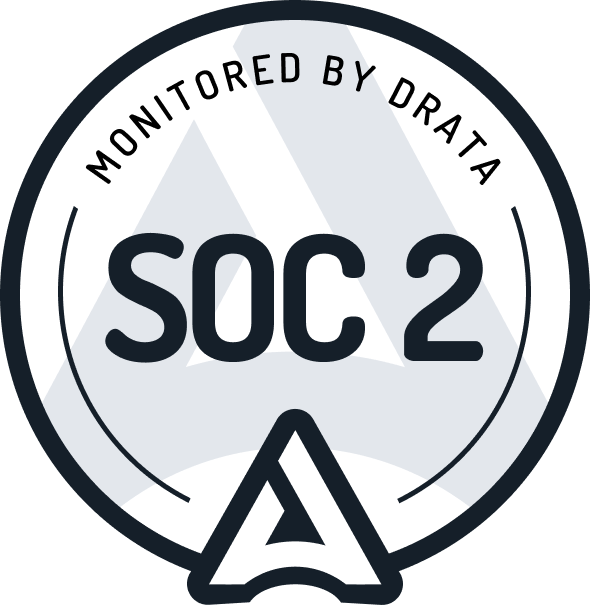Stakeholder software selection
Stakeholder Software: 10 Tips for Success
Getting started with new stakeholder software? This guide includes 10 practical tips to increase your chances of success!

Planning to purchase stakeholder software in the near future? Or perhaps you’ve already signed up for an account and you’re in the process of setting up your systems and onboarding new users?
Our team has spent nearly two decades of developing and implementing stakeholder software for organizations all over the world. Based on our experience, we’ve found that the better your onboarding and implementation goes, the sooner you can start getting value from your software — and the more likely you’ll be successful in the long run.
So you can get off to the best possible start, we’ve put together 10 tips for success to help you get started with stakeholder software.
| What is stakeholder software?
Stakeholder software is designed to help organizations track, manage, and engage stakeholders by keeping a record of stakeholder contacts and interactions. Market leading stakeholder software also includes advanced features or integrations that support stakeholder analysis, stakeholder mapping, communication, insights, reporting, task management, and collaboration. |
1. Define Your Purpose
Any time you introduce new software (or indeed, any change) to your organization, it’s best to start by defining and communicating your purpose. A clear purpose will help guide any decisions that are made and help get your people onboard with the vision from the start.
Some of the reasons you might want to implement or upgrade your stakeholder software include:
- Working more efficiently
- Managing stakeholders more effectively
- Accessing new stakeholder tools (e.g. analysis, reporting, tracking, or collaboration)
- Improving collaboration
- Tightening up data security to reduce risk
- Supporting a specific project
By defining your ‘why’ early on, you can prepare your people for the changes to come (like moving on from spreadsheets!). Plus, research shows that good communication, a clear project goal, reduced ambiguity, realistic expectations, and user involvement are all critical success factors for software projects.
2. Engage Your Stakeholders
Of course, the best way to successfully implement stakeholder software for your organization is to engage your stakeholders. Quite simply, this involves:
- Identifying your stakeholders – Who is impacted by or has an influence on the project (i.e. stakeholder software implementation)?
- Analyzing your stakeholders – What issues and interests apply to each stakeholder group? How do they feel about the project?
- Engaging with stakeholders – Communicate with your stakeholders to keep them informed on the issues relevant to them, ask for their input or perspectives, and start to tackle objections.
- Applying stakeholder feedback – Use input from stakeholders to help shape your approach to software selection and rollout.
By engaging your stakeholders, you can help build a sense of ownership of the system, increasing the likelihood of user acceptance once the software is available.
| What does the research say?
Commitment is challenging to gain (and maintain), but is an essential component for successfully implementing new systems. Studies also show that commitment and support from higher management (along with staff involvement) are critical success factors for implementing new software projects, so be sure to include both these groups in your engagement. Plus, it’s important to engage with multiple levels of the organization to ensure your software and decisions aren’t biased towards the needs of one function, while excluding the needs of others. |
3. Start With a Pilot
Our software developers take an agile approach to building our stakeholder software, but it’s also a good idea to think agile when it comes to your implementation and rollout. In other words, you should start small and then incrementally build on that.
In practical terms, an agile approach might involve pilot testing the software with a small team or group before gradually expanding access to the rest of the organization. Use the insights from your stakeholder analysis to choose the most organized or motivated team (or individuals) for your pilot program. This is a small-scale implementation, with the chosen group gaining access to their account (and training) ahead of everyone else.
Your pilot program should help you:
- Identify and minimize potential risks
- Identity (and remove) potential roadblocks
- Confirm that the software is a good fit for your organization and processes
- Experiment with different settings and tools (before you get too invested)
- Build on what works
- Increase the likelihood of long-term success
If everything goes to plan with your pilot group, you can then plan your software rollout to a larger group — or even the entire organization.
4. Identify Champions
During the pilot program you may identify potential superusers or product champions. These users can play a special role in your rollout by:
- Demonstrating the product (and benefits)
- Getting others excited about a new tool
- Troubleshooting issues
- Linking users to support and training options
- Encouraging users to log in regularly and build new habits
Some software providers work more closely with product champions, giving them additional support access, early access to new features, and recognition for their efforts.
5. Keep it Simple (to Begin With)
In the early days, it’s generally best to keep it simple. Even if your stakeholder management software offers advanced features and integrations, start with the basics and make sure that everyone is up to the same standard before you introduce further complexity.
This milestone is another good place to put your ‘stakeholder engagement hat’ on. Consider how users within your organization might be feeling about the new software during the rollout. It’s normal to get some resistance and not everyone will be willing to participate right away. Some approaches that might help include:
- Tailoring your approach to different roles, involvement, and interests in the software
- Regularly communicating in the weeks leading up to the rollout to build anticipation, demonstrate the ‘why’, answer questions, and gather feedback
- Offering previews or demos (via your pilot team) so that users know what to expect
- Providing training in advance, as well as specific details on the training requirements
- Providing choice wherever possible to give people a sense of control
6. Do the Training
Training is an essential part of any new system implementation — and getting the training content and format right can help to speed up the process and increase user adoption. Your software provider will likely offer a mixture of training options, like:
- Onboarding guides
- User guides, blogs, and eBooks
- Knowledgebase
- FAQs
- Training videos and webinars
- Live and recorded training sessions
- One-on-one or group sessions
- Function-specific and general training
7. Start Afresh
One area we find customers tend to get stuck is with their data. Is it better to put a lot of time into cleaning up old data and importing it into the system? Or should you start with a clean slate, keeping your old records in a spreadsheet in case you need to reference them?
In our experience, it’s often better to start afresh. It will depend on the type of data and how you plan to use it, but often, it isn’t worth investing time in importing it into your new stakeholder software.
Psychologically, this approach can have benefits, especially if your previous data records and processes weren’t in the greatest shape. Consider how the New Year motivates so many people to start afresh with their goals to get in better physical shape. Use your new stakeholder software as a line in the sand — where you can leave the old ways behind, think big picture, and start afresh with better processes that will help you achieve your goals.
8. Define Your Structure
When you implement new stakeholder software, it’s important to set some rules for how your organization will use it, especially if it comes with a lot of features and flexibility (e.g. tags). It might be tempting to try to be everything for everyone, but this can quickly make a mess of your records or confuse your teams.
Consider the frameworks for your data, reporting, and decision-making, then set up a clear structure that’s easy to understand and implement. It’s best to do this during the pilot so that you can test your frameworks, get feedback, and make any necessary adjustments before bringing in additional users.
9. Check In Regularly
It’s a good idea to schedule regular check-ins with your team to find out how they’re going with your stakeholder software. Ask questions to determine whether you’re meeting your original goals and whether anything needs to change.
For example, you might need to change the communication frequency, add new training, or set up email reminders to encourage users to log in each day. Or you might discover your team has mastered the basics and are ready to implement an additional process or advanced feature.
10. Choose the Right Software
Organizational fit is a key success factor for any software rollout. So, of course, a preliminary step to all of the above tips is to start with the right stakeholder software. One that is easy to use, has the features you need, and the right level of support.
For example, Simply Stakeholders is designed to help you easily track, analyze, manage, and communicate with all your stakeholder groups. Popular features include:
- Stakeholder analysis & mapping (based on influence, interest, and impact)
- Sentiment tracking
- Issues tracking
- Email integration
- Task management & collaborative tools
- Flexible categories and tags
- Reporting & analytics
If you haven’t already chosen your software and you’d like to try Simply Stakeholders, contact us to request a demo.
Or if the software you originally chose doesn’t match your needs as well as you’d hoped during the pilot phase, it’s okay to go back a step and rethink your options. It’s always better to switch early on before rolling the software out more broadly and embedding it into your organization’s processes.
Learn More
Want to learn more? Explore our related content:
- What is the Difference Between a CRM vs SRM
- 4 Reasons Why You Should Leave The Spreadsheets Behind
- What to Look For When Investing in Community Engagement Software
- 5 Simple Steps To Getting Started With Stakeholder Data Management






